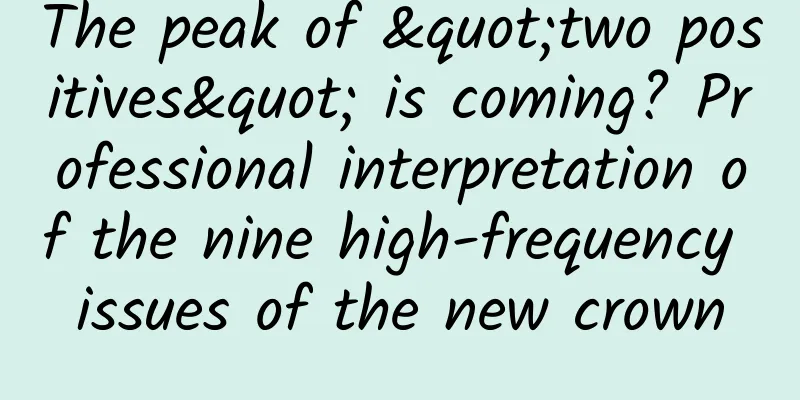Thousands of miles of entanglement, secret transmission between stars and earth, and teleportation, this is something Planck never expected...

|
China has successfully developed the "Jiuzhang-2" and "Zu Chongzhi-2" quantum computing prototypes, IBM of the United States announced the realization of the "world's largest" quantum computing processor, and Japan announced that it will allocate 14.5 billion yen to accelerate research on quantum secure communications... Recently, quantum technology has developed by leaps and bounds, and many countries are striving to take the lead in this technological track that concerns the future of mankind. 121 years ago, when Max Planck proposed the concept of "quantum", even the boldest person could hardly imagine how much change this would bring to the world - nuclear energy, lasers, computers, mobile phones, etc. are all related to this. Now, the "Second Quantum Revolution" has begun. What kind of future will it bring us? Where does China stand in the world's quantum technology trend? What new contributions will China, which is accelerating its high-level scientific and technological self-reliance, make to the development of global quantum technology? People expect that when our understanding of the quantum microscopic world becomes deeper, the macroscopic world will also become more beautiful. Text丨Xu Haitao, Wei Yuhong, Chen Nuo, Zhou Chang, reporters of Outlook News Weekly This article is reprinted from the Outlook client. The original article was first published on December 18, 2021. The original title was "Quantum Ark Sailing towards the Future" and was first published in the 51st issue of Outlook News Weekly in 2021. 1 Advance to the first camp "It can solve specific mathematical problems billions of times faster than the fastest supercomputer!" In October this year, the news of China's new breakthrough in quantum technology caused a major response in the global scientific and technological community. "This is an exciting experimental tour de force," said quantum physicist Barry Saunders, a professor at the University of Calgary in Canada. The publication of the relevant paper in the international authoritative academic journal Physical Review Letters marks that the "Jiuzhang-2" and "Zu Chongzhi-2" quantum computing prototypes developed by China have been recognized by the international academic community. my country has thus become the only country in the world to achieve "quantum supremacy" in the two technical routes of photon quantum and superconductivity. "Quantum supremacy" is like a threshold. It means that when the computing power of a new quantum computing prototype exceeds that of the most powerful traditional computer on a certain problem, it proves that it has the potential to surpass others in many aspects in the future. Over the years, the international academic community has paid close attention to and looked forward to the arrival of this milestone turning point. In September 2019, Google launched a 53-qubit computer called "Linden", which only took 200 seconds to calculate a mathematical algorithm. At that time, the world's fastest supercomputer "Summit" took 2 days. The United States was the first to achieve "quantum supremacy". A year later, China successfully developed a quantum computing prototype machine called Jiuzhang, which uses 76 photons. It only takes 200 seconds to solve the mathematical algorithm Gaussian boson sampling, which took the world's fastest supercomputer 600 million years at the time. This makes China the second country in the world to achieve "quantum supremacy". In October this year, Jiuzhang-2 solved Gaussian boson sampling 10 to the 24th power times faster than the world's fastest supercomputer; Zuchongzhi-2's computational complexity was 1 million times higher than Google's Platanus. my country's "quantum superiority" is eye-catching. "China used to be the world leader in quantum communications. Now we can say that our quantum computing has also entered the world's first echelon." "Jiuzhang-2" and "Zu Chongzhi-2" were developed by the team of Academician Pan Jianwei of the University of Science and Technology of China, said Lu Chaoyang, a team member and project leader of "Jiuzhang-2". Quantum technology is mainly divided into three major areas: quantum computing, quantum communication, and quantum precision measurement. In recent years, with the launch of the "Micius" quantum satellite, China has taken the lead in quantum communication research. This year, China built the world's first satellite-to-ground quantum communication network, setting a world record of 500 kilometers of on-site optical fiber quantum communication, further consolidating its advantage. In the field of quantum precision measurement, China's scientific research level and technological application are on par with those of European and American countries, and each has its own advantages. In recent years, my country has achieved major achievements such as single-photon Kerr effect measurement with Heisenberg limit precision, 200-kilometer single-photon three-dimensional imaging, and detection of magnetic resonance spectra of single DNA molecules in room temperature aqueous solution environment. In addition, China has developed innovative products such as quantum diamond single spin spectrometer and quantum diamond atomic force microscope based on the diamond NV color center technology route. According to the "Research Report on the Development and Application of Quantum Information Technology (2020)" released by the China Academy of Information and Communications Technology, from 2000 to 2019, the number of scientific research papers published in the three major fields of quantum information in the world continued to rise. The number of papers published by US research institutions and enterprises exceeded 12,000, ranking first among all countries, followed by China with more than 9,000 papers, and Germany, Japan, and the United Kingdom ranked third to fifth. Among them, in the three fields of quantum communication, quantum computing, and quantum precision measurement, China's paper publications ranked first, second, and second respectively. "In the three major quantum fields, we are now in the first echelon in all aspects. Quantum computing used to be relatively backward, but now it is gradually catching up," said Guo Guangcan, academician of the Chinese Academy of Sciences and director of the Key Laboratory of Quantum Information of the Chinese Academy of Sciences. "At present, achieving large-scale application of quantum information technology has become a goal that many countries are competing for." Pan Jianwei, an academician of the Chinese Academy of Sciences, said that under the high attention of the Party and the country, my country's quantum technology has achieved a historic leap from following and running side by side to partially leading. 2 The “Golden Age of Research” In 1900, when quantum theory was first developed, China had long been weak and could only be a spectator. More than a hundred years later, how did China's quantum technology rise? Guo Guangcan, who was the first to start quantum information research in China after the reform and opening up, still remembers what he discovered when he went to study at the University of Toronto in Canada in 1980: foreign research on quantum optics began in the 1960s, and related research in China was almost blank. Faced with a 20-year gap, he and a group of Chinese students studying in Canada and the United States agreed that whoever returned to China first would organize a team to take up the quantum optics business. In 1984, after returning to China, Guo Guangcan hosted the first national quantum optics academic conference. After that, he opened the first quantum optics course and the first quantum information laboratory in China, and in 2001, he obtained the first quantum information technology "973" project in my country, gathering more than 50 scholars from more than a dozen scientific research institutions across the country to form a team. In 1996, Pan Jianwei, then a 26-year-old graduate of USTC, went to Austria, the birthplace of quantum mechanics, to pursue a doctorate degree. In the research group of quantum physics master Professor Zelinger, Pan Jianwei quickly distinguished himself. In 1997, the paper "Experimental Quantum Teleportation" in which he was the second author was named one of the top ten scientific and technological advances of the year by the American magazine Science. But becoming a world-class scholar is not all Pan Jianwei dreams of. Pan Jianwei recalled that when his mentor Salinger asked him, "Pan, what is your dream?", he replied, "My dream is to build a world-class quantum optics laboratory in China like the one here." Many years later, Pan Jianwei explained his innermost thoughts to reporters: "Modern science did not originate in China. Can the Chinese catch up with the scientific frontier and lead major innovations?" In Pan Jianwei's view, Chinese scientific and technological workers are all holding back their energy, hoping to prove through hard work that they can not only do well abroad, but also produce excellent results at home. In August 2016, the world's first quantum science experimental satellite, named after the Chinese sage "Mozi", was successfully launched at the Jiuquan Satellite Launch Center. With "Mozi" as a platform, China has achieved three major breakthroughs in international quantum scientific research: "entanglement over thousands of miles, secret transmission between space and earth, and invisible transmission". Since then, China's quantum technology has made great progress, including the experimental discovery of the quantum anomalous Hall effect, "Jiuzhang", the world's first satellite-to-ground quantum communication network, "Zu Chongzhi", "Jiuzhang II", "Zu Chongzhi II". Pan Jianwei attributed the rapid progress of quantum research to China's "golden age of scientific research" and the institutional advantages of "concentrating resources to accomplish major tasks." He took the "Micius" satellite as an example, saying that every component of the satellite is the result of the hard work of various scientific research institutions such as the Shanghai Institute of Technical Physics, the Microsatellite Innovation Institute, the Institute of Optoelectronic Technology, the National Astronomical Observatory, the Purple Mountain Observatory, and the National Space Science Center. "Different institutions have provided us with the basic components we need, which has provided a good engineering foundation for our innovative ideas. Some of my colleagues abroad have also had similar scientific ideas, but no country has fully supported them like our country," said Pan Jianwei. 3 “The drums of the second quantum revolution have been sounded” The whole world is striving to pursue "quantum supremacy" because it is a variable "quantity" - the magical and fascinating properties of quantum superposition, quantum entanglement, and quantum non-cloning give quantum technology great application prospects and broad imagination space. "Quantum mechanics is a mysterious and elusive subject. None of us can truly understand it, we just know how to use it," Nobel Prize winner and American physicist Murray Gell-Mann once said. "The emergence of quantum theory triggered the first quantum revolution in the last century and gave birth to modern information technology." Pan Jianwei introduced that based on quantum theory, technologies such as nuclear energy, lasers, and semiconductors came into being, and then major applications such as computers, the Internet, and mobile phones were developed. Entering the 21st century, new discoveries, new theories, and new technologies in the quantum field have emerged intensively, indicating that the second quantum revolution has entered its starting and acceleration period. Nature magazine commented that: "The battle drums of the second quantum revolution have been sounded!" "In the first quantum revolution, people only asked what quantum theory could enable us to do, without asking why. It was passive observation and application." Guo Guangcan said that the second quantum revolution was the active use of quantum properties to develop innovative applications such as quantum communication, quantum computing and quantum precision measurement. Simply put, the revolutionary nature of these applications lies in the fact that quantum computing can enable exponential growth in human computing power, quantum communications can theoretically achieve absolute confidentiality in communications, and quantum precision measurement can improve detection accuracy from the micron level to the "atomic level." Of course, the timetable for converting quantum technology into real productivity varies. Zhu Xiaobo, professor at USTC and the person in charge of the Zu Chongzhi-2 project, said: "The mainstream view in the international quantum community is that it will take about 10 to 15 years to develop a fault-tolerant universal quantum computer with practical value." It is understood that quantum computing includes multiple technical routes such as superconductivity, photons, ion traps, semiconductors, and topology. Currently, international technology companies such as Google, IBM, Intel, Microsoft, Amazon, and Honeywell are rushing to the market. Domestic universities such as the University of Science and Technology of China, Zhejiang University, Tsinghua University, and Southern University of Science and Technology, as well as companies such as Tencent, Huawei, and Alibaba have also deployed research and development. It is generally believed in the industry that the development of quantum computers will go through three stages: In the first phase, we will develop a dedicated quantum computer with 50 to 100 quantum bits, achieving a milestone breakthrough in "quantum supremacy". The second stage is to develop a quantum simulator that can manipulate hundreds of quantum bits to solve some problems that supercomputers cannot solve and have great practical value, such as quantum chemistry, new material design, and optimization algorithms. The third stage is to significantly improve the manipulation accuracy, integration quantity and fault tolerance of quantum bits, and develop a programmable universal quantum computer. "Including 'Jiuzhang-2' and 'Zu Chongzhi-2', all the current quantum computer research in the world is still in the first stage." Zhu Xiaobo said that the academic community is optimistic that local applications will be implemented in about five years. As for the third-stage programmable general-purpose quantum computers, scholars predict that they can be used in code breaking, weather forecasting, financial analysis, drug development, mineral exploration, etc. More far-reaching is that the powerful computing power of quantum computers will help humans understand major basic scientific problems in the fields of physics and chemistry, and produce a "multiplication effect" with technologies such as artificial intelligence, accelerating the "fission reaction." Zhang Shengyu, head of Tencent Quantum Lab, told reporters that they have recently made progress in quantum bit initialization, quantum compilation and architecture, large-graph algorithm design, and are actively exploring industrial applications such as drug development and material simulation. In the field of quantum communications, the world is at a stage where network construction and application exploration are progressing in parallel. It is about 1 meter high and weighs less than 100 kilograms, with a deep lens looking up at the sky... This is the world's first miniaturized mobile quantum satellite ground station recently launched by USTC Guodun Quantum Technology Co., Ltd. "This ground station is lightweight and mobile and can be installed within 12 hours. It can be used in border areas, islands and other remote areas to connect with the 'Mozi' satellite, allowing for convenient use of quantum secure communications." Zhou Lei, quantum project director of KUST Guodun Company, introduced that their other new application is a commercial quantum key distributor that can generate thousands of keys per second. The goal is to enable quantum communications to be used in places where "optical fiber can reach." It is reported that the current research and development direction of international quantum communication focuses on communication distance, core components, miniaturization, new protocols, etc. New applications in government affairs, energy, finance and other fields are constantly emerging, and industry standards and evaluation specifications are gradually being improved. China is at the forefront of global scientific research and application, and is leading the preparation of quantum communication standards in the International Telecommunication Union and the International Organization for Standardization. Compared with quantum computing and quantum communication, quantum precision measurement seems more mysterious, but the industry generally believes that quantum precision measurement will be the first field in quantum technology to be applied and industrialized. "The precision of quantum measurement can reach the atomic level." Guoyi Quantum (Hefei) Technology Co., Ltd. (hereinafter referred to as Guoyi Quantum) is the earliest innovative enterprise in China with quantum precision measurement technology as its core. Zhang Wei, vice president of the company, said that traditional measurement technology can only detect the minimum micrometer level, while quantum technology can be thousands or tens of thousands times more precise to the nanometer and sub-nanometer level, bringing revolutionary technological progress to the precision instrument industry. For example, using quantum precision measurement in the field of life sciences can accurately analyze the content of extremely trace substances in the blood. "Quantum precision measurement is now beginning to enter all walks of life and every household." He Yu, chairman of Guoyi Quantum, said that quantum precision measurement has been demonstrated in the fields of oil exploration, life sciences, advanced materials, energy and electricity. In the future, quantum precision measurement may be applied to many fields, including surface properties and structural characterization of superconducting materials, cardio-cerebral magnetic measurement in the medical field, trace material component analysis in preclinical research, tumor cell imaging in life sciences, and geomagnetic field measurement for navigation, bringing revolutionary opportunities to the instrument industry. 4 Three major challenges: technology, industry and talent The “Second Quantum Revolution” has opened up a new technological track for countries around the world. In January this year, France announced the launch of a national strategy for quantum technology, planning to invest 1.8 billion euros over five years to make France one of the top three in the world in the quantum field. In May, Germany announced a grant of nearly 2 billion euros to enable the country to "keep pace" in the quantum race. In mid-November, Australia announced an investment of 100 million Australian dollars to promote the commercialization of quantum research. At the end of the same month, Japan announced a grant of 14.5 billion yen to strengthen research on quantum secure communications to help boost economic and military security. As the world races to develop quantum computing, industry insiders believe that my country currently faces at least three major challenges: technology, industry and talent. Let’s look at the technical challenges first. As a science that explores the microscopic world, quantum technology research is extremely difficult. Wang Jianyu, an academician of the Chinese Academy of Sciences, likened the realization of the quantum satellite "space experiment" to "a person at an altitude of 10,000 meters throwing a coin into a piggy bank on the ground." In the view of Guo Guoping, deputy director of the Key Laboratory of Quantum Information of the Chinese Academy of Sciences, developing a quantum computer is like "building a pyramid with atoms." "Quantum computing has extremely high requirements for the environment. Not only does it have to be ultra-low temperature, but it also has to be 'ultra-clean'. Extremely weak noise, light, magnetic fields and tiny particles can disrupt the signal, and the entire system is very complex and difficult," said Kong Weicheng, rotating chairman of Hefei Benyuan Quantum Computing Technology Co., Ltd. Zhu Xiaobo said that one of the major technical challenges in developing quantum computers is to improve the accuracy of manipulating quantum bits and increase the accuracy of operations. "For example, even if the accuracy of a single gate operation reaches 99%, after 70 operations, the accuracy will drop below 50%." Looking at the industrial challenges, many experts said that the current development of quantum technology is in the transition stage from scientific research to application. To accelerate the advancement to the industrialization stage, it is necessary to form an industrial ecology of "scientific research institutions + enterprises + users". Ying Yong, president of KUST Guodun Quantum Technology Co., Ltd., said that in the field of quantum communication, the biggest difficulty in the industry is that the scale of use is small, and there will be a lag in product promotion compared to research and development. At the same time, quantum communication requires users to switch their usage habits, and the cost and workload of transforming the information system are very high, which affects the application of quantum communication technology. "Quantum technology products developed by scientific research institutions need to be tried out by more companies and users. Only by discovering problems in applications, creating application scenarios and providing timely feedback to the R&D end can the industry develop iteratively," said Guo Guangcan. Finally, insufficient talent supply is considered to be an important factor restricting the development of quantum technology. Robert Sutor, IBM's vice president for quantum strategy and ecology, once said that there is a general shortage of quantum talents around the world, and companies need to work more closely with universities to cultivate relevant talents from the higher education stage. For example, in quantum computing, there is an urgent need for talents in physics to carry out related hardware research and development, and talents in mathematics and computer science are also needed. "Our biggest difficulty at the moment is the lack of talent!" He Yu said, not only quantum theory talents are needed, but also instrument engineers, optical engineers, microwave engineers, algorithm engineers, etc. 5 "Using concepts", "over-exaggerating" and "academic doubts" In addition to the challenges, the growing influence of quantum technology has also attracted some "concept-riding" products, as well as unprofessional "academic doubts" and exaggerated interpretations that are intended to attract attention. “Quantum energy waves resonate harmoniously with human bioelectricity, deeply nourishing delicate skin,” “Using the principle of quantum entanglement to allow crops to absorb more fertilizer and prevent pests from laying eggs,” “The wave-particle duality of quantum is yin and yang, which scientifically explains Feng Shui”... The reporter found that in the past year, more than 2,000 "quantum enterprises" of various types have emerged in China, "grafting" the principles of quantum mechanics with traditional industries such as cosmetics, agriculture, food, clothing, and automobiles. Experts believe that these companies are not industrializing quantum technology, but are "pseudo-innovation" to take advantage of the hot spots. "Quantum technology has not yet made products that ordinary people can use, and it will not be achieved in a short period of time. It is impossible to quickly reach the level of entering thousands of households," said Guo Guangcan. Experts said that to identify whether a product uses quantum technology, it depends on whether it uses quantum coherence, superposition and other characteristics. If it does not use them, it is just "riding the concept." To put it more bluntly, quantum technology has not yet been applied to public life at this stage. At the same time, quantum technology has also presented polarized evaluations in the public opinion field. There are both excessive exaggerations such as "quantum computers will soon replace electronic computers" and "quantum communication is faster than the speed of light, even Einstein was surprised", and complete denials such as "quantum computing is a fraud" and "quantum communication is a useless scam", which have brought confusion and ideological confusion to the public. "In order to avoid over-interpretation, we have adopted more neutral expressions when releasing information. For example, we use 'quantum superiority' instead of 'quantum hegemony', and use the term 'quantum computing prototype' to emphasize that it is still in the experimental research stage and is far from practical use." A scholar from Academician Pan Jianwei's team told reporters, but in the process of information dissemination, some media and personal public accounts still "add fuel to the fire". "Quantum computers are definitely an important direction for the future, but they are used to solve specific problems that are difficult for electronic computers to solve. They cannot accelerate all problems. They are complementary to electronic computers rather than substitutes." Duan Luming, Yao Qizhi Chair Professor at Tsinghua University, and many other experts said that quantum technology requires objective and rational cognition. "Quantum technology is like a baby. It has infinite possibilities in the future, but it is not strong enough now, and it cannot 'cure all diseases'," said He Yu. "The most basic criterion for identifying doubts about quantum technology is whether it has been published in a peer-reviewed scientific journal." Yuan Lanfeng, deputy director of the Science Communication Research Center of the Chinese Academy of Sciences, said that many papers by my country's quantum technology experts have been published in top international journals, while articles opposing quantum technology are all online articles, and none of them have been published in academic journals. The reason is that these articles contain scientific errors and cannot pass the review. Many scholars have analyzed that in recent years, there have been more and more voices questioning quantum in China. One of the reasons is that quantum theory is difficult to understand, and characteristics such as quantum entanglement and quantum superposition are contrary to daily experience, which makes people doubt it. From a deeper level, quantum technology has not yet developed to the stage of mass application. The doubts can be understood as a kind of concern, anxiety and worry. 6 The future is unlimited The quantum era is upon us. Accelerating the development of quantum technology requires joint efforts and collaborative efforts. "To lead the trend in the 'second quantum revolution', we cannot be 'guerrillas', we must organize a 'group army'." Guo Guangcan said that the quantum computer industry involves hardware, software, standards, engineering technology, user habits and other aspects, and requires government support, scientific research institutions, corporate cooperation and even the attention of the general public. It is understood that the current new trend is that some countries are forming transnational technology alliances to jointly promote the development of quantum technology. At the G7 summit held in June this year, seven countries including the United States, Britain, Japan, Canada, and Italy announced the joint development of a satellite-based quantum encryption network, the "Federated Quantum System" (FQS), which will coordinate resources and funds to promote joint research and plan to launch the first FQS satellite in 2023. At the same time, a number of quantum technology industry alliances have been formed internationally. For example, IBM's "QNetwork" has more than 100 members from universities, laboratories, and multiple industries such as aviation, automobiles, banking and finance, jointly promoting the development and application of quantum computing. "Quantum technology requires the cooperation of a large number of companies from laboratory to market application scenarios. Currently, domestic companies such as Benyuan Quantum have also formed an industry alliance, and we hope to grow and develop further." Guo Guoping said. Ying Yong believes that China should speed up the formation of a "quantum +" industrial ecosystem. "For example, in the quantum communication industry, the denser the network, the greater the value, which will drive more application development and user groups." It is understood that in recent years, cities such as Hefei, Jinan and Wuhan have initially built quantum communication networks. Recently, the construction of a new generation of "Hefei Quantum Metropolitan Area Network" jointly developed by the Hefei Municipal Government, China Telecom and Guodun Quantum has started. It includes 8 core network nodes and 159 access network nodes. The total length of the network optical fiber is 1,067 kilometers, which will be connected to government affairs, finance, medical care and other industries. As a major disruptive innovation, the key to the development of quantum technology is talent. Relevant US government agencies have proposed adding quantum information science courses to the education system from kindergarten to high school, and Harvard University has added a quantum science and engineering degree. In China, this year, the University of Science and Technology of China was approved to establish a new undergraduate major in quantum information science and a doctoral degree in quantum science and technology. Many scholars suggested supporting and encouraging more universities to open quantum technology majors and cultivate more quantum talents with cross-disciplinary knowledge of physics, mathematics, information, instruments, materials, etc. Duan Luming introduced that Tsinghua University has set up a quantum information undergraduate class, which uses cross-disciplinary training methods to help students form a knowledge framework from basic to applied. "The development of quantum technology in China is very fast, and the scale of training should be further expanded to provide enough talents for scientific research and enterprises." The China Academy of Information and Communications Technology predicts that in the next five years or so, quantum computing may appear based on noisy medium-sized quantum processors, combined with cloud platforms to explore application cases with practical value; quantum communication will focus on key technologies and enabling components of quantum information networks, carry out networking prototype experiments and gradually promote the construction of a standard system, and continue to explore commercial scenarios for quantum secure communications; quantum precision measurement will be expected to be the first to break through applications in new-generation positioning, navigation and timing systems, weak magnetic field and gravity field measurement systems, high-sensitivity imaging systems and other fields. While quantum technology is evolving at a high speed, we must also see that its development and application prospects are still long-term and uncertain. Dr. Lai Junsen from the Institute of Technology and Standards of the China Academy of Information and Communications Technology introduced that, taking quantum computing as an example, the threshold of error-correctable logical quantum bits has not yet been crossed, large-scale general quantum computing is still a long-term goal, and the quantum computing system architecture and software system are still in the initial exploration stage. The requirements for the working environment are still very strict. Superconducting, photon, ion trap, semiconductor, topology and other technical routes are developing in parallel, and it is still unknown which route will "win" in the future. "Quantum technology has a bright future but it is by no means an easy road. We must have the same scientific spirit as when we developed the 'two bombs and one satellite'." Guo Guangcan and many other experts emphasized that only by not fearing difficulties and obstacles can we reach a new "quantum peak", seize the commanding heights and build new advantages. Zhu Xiaobo said that quantum technology is a key core technology field related to the future of mankind, and he hopes that more young people with both wisdom and courage will come in. "Boldly venture into the uncharted territory of scientific research and industry, and work hard for 10 to 15 years, more important results will surely emerge," he said. |
<<: Astronauts can turn around by just swinging their arms, but what about satellites without arms?
Recommend
Huawei Mate 2 User Experience
Let me start with the advantages: 1. Battery: I u...
When returning home for the Spring Festival, beware of carbon monoxide poisoning!
As the Spring Festival approaches, people who wor...
You can tell whether the battery is new by dropping it
It is said that there is a simple test method to ...
29 suggestions before launching your brand on Xiaohongshu
Xiaohongshu’s strategy has changed. Last year, it...
Have you noticed that there are fewer and fewer fireflies around us?
Have you noticed that there are fewer and fewer f...
Lei Jun vs. Zhou Hongyi: A 20-year-long "battle between heaven and earth"
Destined to be unfriendly "The predecessors ...
First screenshots of Windows 10 Mobile leaked
It is now very clear that Microsoft's new Win...
The tragedy of WeChat’s payment scenarios: Grab the red envelope and spend it with Alipay?
[[128063]] After the New Year's Eve, the fier...
The most comprehensive big data analysis report on Double Eleven 2017!
So today, I will take you to explore the secrets ...
Without data accumulation and user portraits, this is how I developed Toutiao products...
Toutiao , which had been rowing quietly and attra...
If food is stuck in your teeth, it may be your teeth crying out for help! Don’t take it lightly…
Almost everyone has experienced food stuck in tee...
Labor Day Marketing Case Study
In the past, I thought that the inevitable "...
iOS 17 Beta 5 updated with multiple changes!
Early this morning, Apple pushed the iOS 17 Beta ...
Is it true that a cunning rabbit has three burrows? How much do you know about these interesting facts about rabbits →
Chinese people are familiar with rabbits. There i...
iOS 15 is coming soon: a bunch of new features
iOS 15 release date: September 2021 Apple release...









